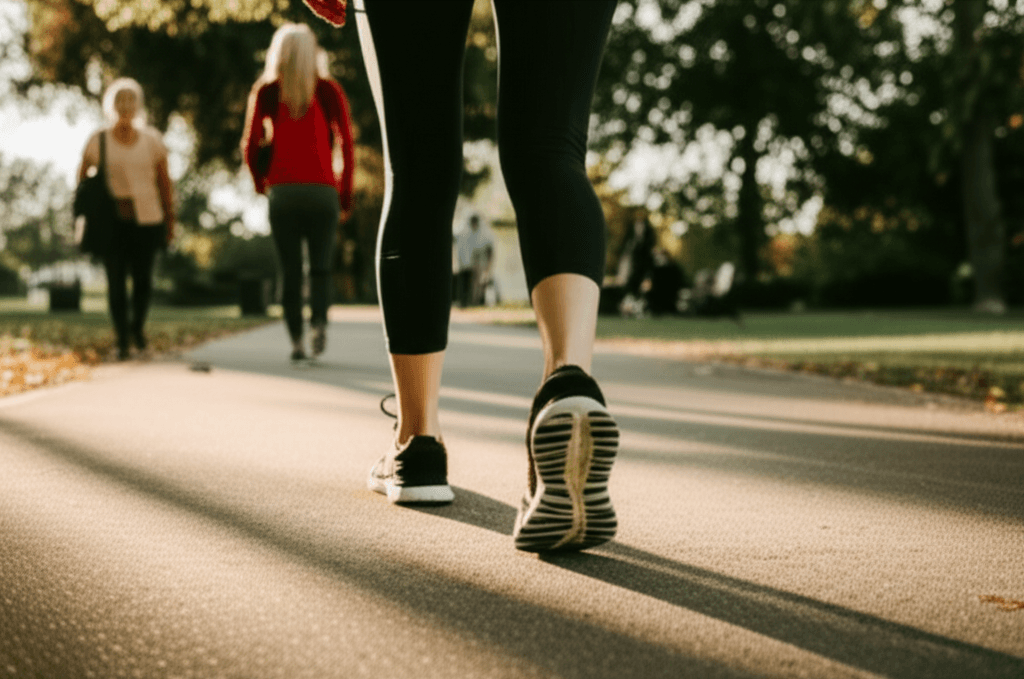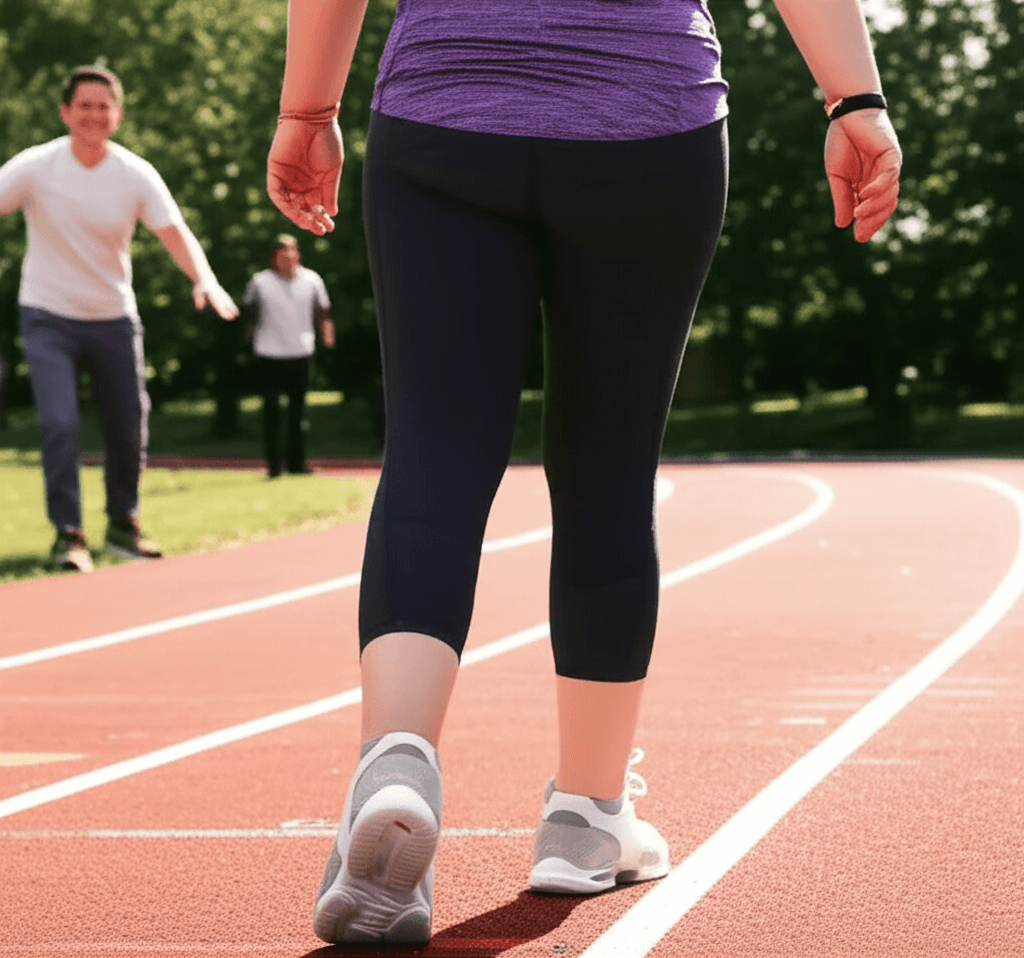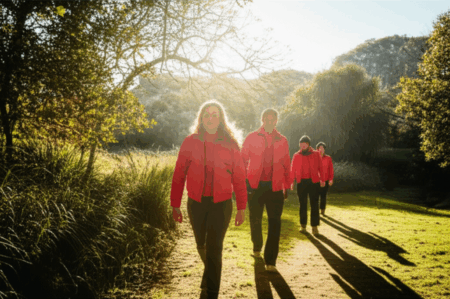In an age where fitness trends constantly cycle through social media feeds, one seemingly unusual movement has captured widespread attention: retro walking. Far from being a mere viral sensation, the practice of walking backward is gaining significant traction not just online, but also in medical and rehabilitative circles, with doctors and physical therapists touting its surprising and scientifically-backed benefits.

What is Retro Walking?
Retro walking, also known as backward walking or reverse walking, is precisely what it sounds like: moving in reverse, typically in a controlled environment. While it might appear unconventional, this method challenges the body in ways traditional forward walking does not. Unlike forward walking where the heel typically strikes first, retro walking involves the toes touching down first, then rolling through to the ball of the foot and off the heel. This fundamental change in gait engages different muscle groups and requires heightened concentration.
The practice itself isn’t new; it has roots in ancient cultural rituals and martial arts training, particularly in East Asia, where it has long been recognized for its holistic physical and mental benefits.

Why the Social Media Explosion?
The recent surge in retro walking’s popularity on platforms like TikTok can be attributed to its unique and eye-catching nature. In a crowded digital space, content that stands out tends to go viral. Videos demonstrating backward walking, often on treadmills, have racked up millions of views, sparking curiosity and encouraging others to try the “new” trend. This online exposure has transformed a niche rehabilitative exercise into a mainstream fitness phenomenon.

The Science-Backed Benefits of Moving in Reverse
While social media might highlight the novelty, the medical community points to concrete physiological advantages that make retro walking much more than a gimmick.
Strengthening Underutilized Muscles
Forward walking predominantly uses certain muscle groups, potentially leading to imbalances. Retro walking, however, provides a cross-training effect, engaging muscles in different ways. It particularly targets the gluteal muscles, quadriceps, and hip flexors more intensely than forward walking. It also works the calves and hamstrings differently, helping to correct muscle imbalances and potentially preventing injuries.
Enhancing Balance and Coordination
Walking backward significantly challenges proprioception—your body’s awareness of its position in space. Without the usual visual cues, your brain and nervous system must work harder to process sensory information and maintain stability. This increased cognitive engagement and neuromuscular challenge leads to improved balance and coordination, which can be particularly beneficial for older adults at higher risk of falls. Studies have shown that backward walking can improve gait, walking speed, and balance, especially after injury or illness.
Reducing Joint Pain and Improving Mobility
One of the most frequently cited benefits, particularly by physical therapists, is the positive impact on joint health, especially for the knees and lower back. Retro walking changes how pressure is distributed in the knee joint, reducing stress on the kneecap. The “toe-heel” movement engages the quadriceps, which support the knees and absorb impact, and can increase the range of motion in hip flexors. This makes it a useful low-impact exercise for individuals with knee osteoarthritis, anterior knee pain, or those recovering from knee injuries. It can also activate low back muscles that stabilize the spine, potentially alleviating chronic lower back pain.
Boosting Cardiovascular Health and Calorie Burn
Retro walking requires more energy and effort than forward walking at the same speed because the body works harder to maintain balance and stability, engaging more muscle groups. This increased exertion elevates your heart rate, providing a more intense cardiovascular workout and leading to a higher calorie expenditure compared to forward walking.
Sharpening Cognitive Function
Beyond the physical, retro walking offers a mental workout. Since it’s not an automatic process, it requires more concentration and conscious thought about movement, engaging the brain in new ways. This can stimulate brain regions associated with memory, spatial awareness, and problem-solving, with some studies suggesting it may even improve short-term memory.

What Doctors and Physical Therapists Are Saying
Medical professionals are largely in agreement that retro walking is a valuable addition to a fitness routine, particularly within rehabilitation and physical therapy. Dr. Shane Davis, a sports medicine physician, notes that it’s a challenging workout for almost anyone, benefiting both the body and mind. Physical therapist Rachel Tavel emphasizes that it can “spice up your routine, target underutilized muscles, or even manage pain,” making it a low-impact cardio workout with unique rewards.
They highlight its use in:
- Rehabilitation: Often integrated into programs for patients recovering from stroke, knee osteoarthritis, juvenile rheumatoid arthritis, and ACL injuries due to its ability to rebuild strength and improve range of motion without excessive stress on healing tissues.
- Cross-Training: As an exercise physiologist Jordan Boreman explains, it adds variation to avoid overuse injuries common with repetitive forward movements.
- Fall Prevention: Especially for older adults, the enhanced balance control is a significant benefit.
While doctors endorse its benefits, they also stress that it’s not a universal solution and proper guidance is essential, especially for individuals with pre-existing conditions or balance issues.

How to Incorporate Retro Walking Safely
Given its unique demands, safety is paramount when trying retro walking.
Start Slowly and Gradually Increase
Begin with short sessions, perhaps just one to two minutes, and gradually increase duration as you become more comfortable. Experts suggest adding 5-10 minutes of retro walking to your regular routine, either as intervals or a dedicated warm-up.
Choose the Right Environment
- Treadmill: This is often recommended for beginners as it provides a controlled, stable surface without obstacles. Start at a very slow speed (e.g., 1-1.5 miles per hour) and gradually increase. Always use the handrails for support and attach the safety clip.
- Clear, Flat Spaces: If outdoors, choose a smooth, paved path, an empty parking lot, a gym floor, or a flat grassy area free of obstacles. Avoid crowds or uneven terrain.
- Supervision: For older adults or individuals with vision or balance issues, having a spotter nearby for support is highly recommended.
Maintain Proper Form and Awareness
Engage your core and maintain an upright posture, avoiding leaning backward. While it’s natural to want to look behind you, constantly glancing over your shoulder can disrupt balance. Instead, use peripheral vision and occasionally check your surroundings. Focus on the toe-first strike, followed by rolling onto the heel.
Listen to Your Body
Like any new exercise, some muscle soreness is normal as your body adjusts. However, if you experience dizziness, pain, or unsteadiness, stop immediately. Always consult your doctor before starting any new exercise program, especially if you have underlying health conditions, recent injuries, or balance concerns.
Conclusion
Retro walking is more than just a fleeting social media trend; it’s a scientifically supported exercise with a wealth of physical and cognitive benefits. From strengthening often-neglected muscles and improving balance to easing joint pain and enhancing brain function, moving in reverse offers a unique and effective way to diversify your fitness routine. By approaching it safely and mindfully, individuals can truly experience the profound advantages that have doctors and physical therapists championing this “backward” step forward in fitness.







